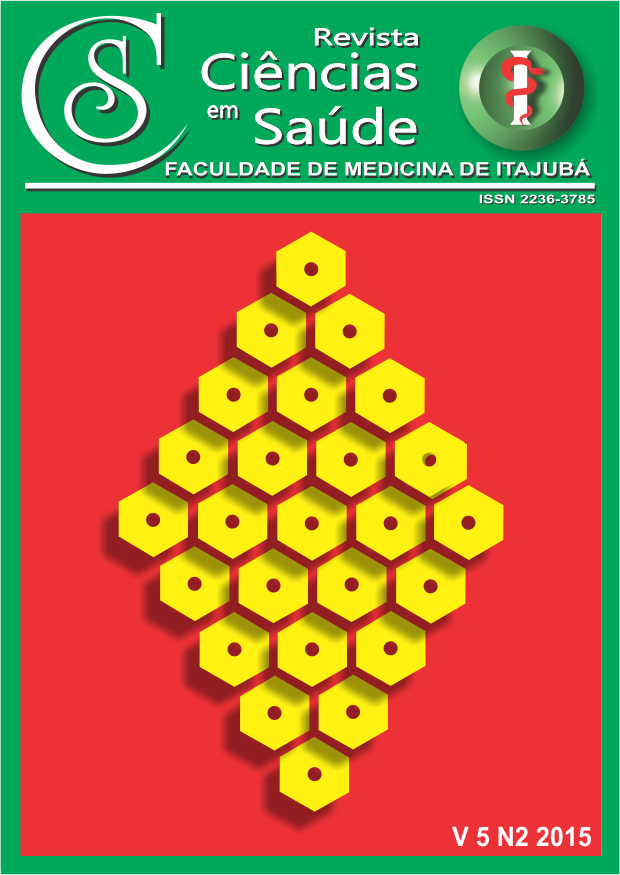Tratamento Endovascular da Síndrome de Congestão Pélvica: Série de Casos/Endovascular Treatment of Pelvic Congestion Syndrome: Case Series
Main Article Content
Abstract
RESUMO
Introdução: As varizes pélvicas fazem parte de uma entidade clínica, a síndrome da congestão pélvica (SCP), que acomete mulheres em idade reprodutiva, geralmente multíparas, e cursa com como dor e sensação de peso crônico na região pélvica, dispareunia, dismenorreia, congestão vulvar e disúria. A síndrome é decorrente do refluxo de veias ovarianas incompetentes e dilatadas. O refluxo pélvico também apresenta-se como um fator causal importante no que diz respeito ao surgimento e recidiva da doença venosa nos membros inferiores. Casuística: Foram descritos três casos de pacientes portadoras de SCP com sintomas clássicos, com diagnóstico tardio. Todas foram submetidas à embolização percutânea das varizes através do implante de molas fibradas de liberação livre através do aceso femoral, e obtiveram resultado satisfatório, semelhantes aos citados na literatura. Discussão: O diagnóstico da SCP é difícil e o tratamento envolve terapia medicamentosa para melhora dos sintomas e, em casos refratários, o uso de técnicas minimamente invasivas como a embolização das veias gonadais. Trata-se de uma condição comum e subdiagnosticada, sendo muitas das vezes um achado de exclusão de outras patologias. Conclusão: A embolização percutânea das veias ovarianas é um método simples, eficaz, com baixos índices de complicações e com resultado satisfatório a curto e médio prazo. A recidiva é frequente no longo prazo, e pode estar relacionada à progressão da doença varicosa ao longo do tempo e suas diferentes manifestações clínicas.
Palavras-chave: Varizes, Dor pélvica, Embolização terapêutica.
ABSTRACT
Introduction: Pelvic varices are part of a clinical entity, Pelvic Congestion Syndrome. This disease affects women at reproductive age, multiparous and presents symptoms such as chronic pelvic pain, feeling of heaviness in the pelvic region, dyspareunia, dysmenorrhea, vulvar congestion and urinary symptoms such as dysuria. Case Report: The aim of this study is to report a small case series of treatment of pelvic varices by embolization. We described three cases of patients suffering from pelvic varices with classic symptoms, which showed a delayed diagnosis, that caused emotional, aesthetic and marital problems. All of them underwent percutaneous embolization of varices, achieved satisfactory results and have been in clinical monitoring. Discussion: The cause of the disturb is the reflux of incompetent and dilated ovarian veins. Pelvic reflux also presents itself as an important causative factor concerning the appearance and recurrence of venous disease in lower members. Diagnosis is difficult. It is a common and underdiagnosed condition, often being a finding that excludes other pathologies. The results found after treatment were similar to stated in literature. Conclusion: The embolization of pelvic varices has been shown simpler and effective, with lowest rates of complications and with satisfactory results at short and long term. However, more studies regarding the outcome of different treatment methods are needed.
Keywords: Varicose veins, Pelvic pain, Therapeutic embolization.
Article Details
Authors maintain copyright and grant the HSJ the right to first publication. From 2024, the publications wiil be licensed under Attribution 4.0 International 
 , allowing their sharing, recognizing the authorship and initial publication in this journal.
, allowing their sharing, recognizing the authorship and initial publication in this journal.
Authors are authorized to assume additional contracts separately for the non-exclusive distribution of the version of the work published in this journal (e.g., publishing in an institutional repository or as a book chapter), with acknowledgment of authorship and initial publication in this journal.
Authors are encouraged to publish and distribute their work online (e.g., in institutional repositories or on their personal page) at any point after the editorial process.
Also, the AUTHOR is informed and consents that the HSJ can incorporate his article into existing or future scientific databases and indexers, under the conditions defined by the latter at all times, which will involve, at least, the possibility that the holders of these databases can perform the following actions on the article.

